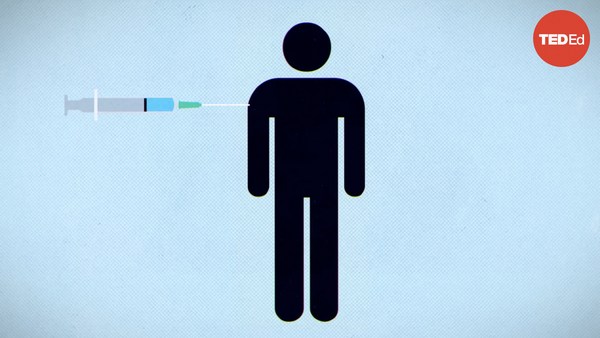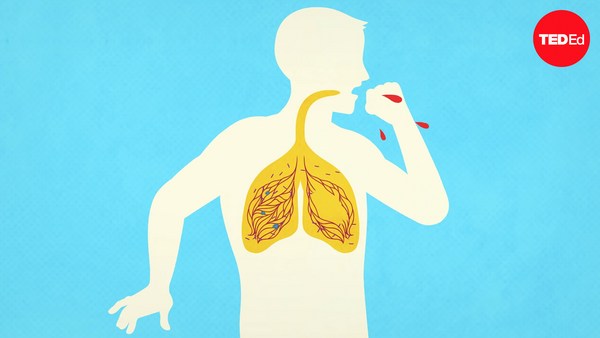In 1952, polio was everywhere. For years, this virus killed or paralyzed roughly half a million people annually, leaving survivors reliant on crutches, wheelchairs, and respirators. Yet just 10 years later, paralytic polio cases in the US dropped by 96%. Soon, similar trends spread worldwide, and it looked like we were on track to eradicate polio for good. But in the 21st century, the virus started striking back. So, what’s the source of these recent spikes, and how can researchers fighting polio finally get rid of this deadly disease?
To answer these questions, we first need to understand the true danger of polio. Most infected individuals only present mild flu symptoms or no symptoms at all, with paralysis occurring in less than 1% of cases. Which is why the real danger of polio is how infectious it is. Historically, there have been three strains of poliovirus, all of which typically enter our mouths from airborne droplets or contact with infected fecal matter. This means polio runs rampant in communities with poor sanitation. And once infected, individuals remain contagious for 3 to 6 weeks, spreading a silent outbreak with few trackable symptoms.
This is what made polio unstoppable until US physician Jonas Salk found a solution in the early 1950s. He created an inactivated version of the virus that, when injected, prevented all three strains from causing paralysis. However, this inactivated poliovirus vaccine, or IPV, didn’t stop poliovirus from living in our bodies and spreading to others. Fortunately, Polish American microbiologist Albert Sabin was creating the oral polio vaccine, or OPV, at the same time. This even cheaper and easier to administer treatment contained weakened variants of each poliovirus strain, known as attenuated viruses, And once ingested, these prevented polio from settling in the body altogether.
Over the next several decades, IPV and OPV eliminated polio in country after country. But near the turn of the century, this arms race between medical ingenuity and viral evolution took a turn. Scientists discovered variant strains of polio— each almost identical to one of the three existing strains. And their source was even more troubling. Up to this point, one of OPV’s greatest advantages was that its attenuated viruses could spread just like wild polio, moving through the air and immunizing unvaccinated individuals. But researchers discovered that if these weakened viruses circulated for several weeks in under-vaccinated populations, they could mutate into new vaccine-derived strains.
To be clear, this didn’t mean the attenuated vaccine was inherently dangerous. OPV had already been used to stop wild poliovirus type 2 worldwide and eradicate all wild poliovirus from the Americas, West Pacific, and countless other countries. The issue was ensuring populations met a certain vaccination threshold— specifically, at least 80% of every community needed to be vaccinated to prevent strains from mutating. So, in our current fight against polio, we've taken two approaches to this problem.
First, vaccine developers have made even safer forms of OPV. Monovalent and bivalent OPVs respectively contain one or two types of attenuated poliovirus, reducing the number of strains that could possibly mutate. These vaccines helped eradicate wild poliovirus types 2 and 3, and today they’re tackling the last remnants of type 1 poliovirus in Pakistan and Afghanistan. Vaccine researchers also developed OPVs targeting vaccine-derived polio. Currently, most polio cases are caused by vaccine-derived poliovirus type 2 outbreaks in Africa and the Middle East. So researchers created a new vaccine specifically to tackle this strain with minimal risk of mutating.
Second, medical workers on the front lines are using cutting-edge technology to ensure every population meets that 80% threshold. Digital tools like geospatial imaging and analysis help them locate and immunize remote communities. Extensive monitoring systems ensure they don’t miss a single child. And waste surveillance systems employed across the globe can alert us to potential outbreaks.
Today, the fight against polio is at a critical moment. We’re primed to eradicate wild poliovirus in the near future, and with our new vaccines, eradicating vaccine-derived strains might not be much further off. But doctors still struggle to reach areas experiencing military conflict and civil unrest. And without keeping vaccination rates high, polio’s silent outbreaks could easily surge. So it’s essential that we keep up the pressure to finally finish what we started over 70 years ago.


